Introduction
Harnessing the power of mobile apps in the e-commerce space is more than a trend; it's a strategic imperative. Magento-based mobile apps are revolutionizing the retail experience with their innate ability to elevate user engagement and boost sales. In this article, we will explore the benefits of having a Magento mobile app for your business, the types of Magento mobile apps available, and the key steps involved in creating and launching a successful app.
We will also discuss the importance of customization and branding, as well as the challenges and solutions in Magento mobile app development. By following this expert advice, you can position your business at the forefront of digital retail innovation and meet the evolving preferences of consumers who increasingly favor the convenience and personalized touch of shopping through mobile applications.
Why You Need a Magento Mobile App
Utilizing the power of apps in the e-commerce sector is more than a trend; it's a strategic imperative. Magento-based apps are revolutionizing the retail experience with their innate ability to elevate user engagement and boost sales. Here's an exploration of the benefits that a Magento mobile app can bring to your business:
- Enhanced User Experience: A dedicated mobile app trumps a responsive website by offering a streamlined, intuitive interface. Customers enjoy the ease of navigation and the ability to shop with just a few taps, which can significantly increase conversion rates.
- Tailored Shopping Journeys: Leverage the power of personalization by delivering custom recommendations and promotions. This is made possible by analyzing client data, such as browsing habits and purchase histories, to create a more engaging shopping experience.
- Direct Communication Channels: Utilize push notifications and in-app messaging to directly connect with your user base. Whether it's announcing a new product line or providing updates on their orders, these tools keep individuals in the loop and engaged. The capability of an app to function without an internet connection is a game-changer, enabling customers to browse products and make wishlist selections at their convenience.
- Device Feature Utilization: Mobile apps can integrate with smartphone capabilities such as the camera, GPS, and more, offering innovative features like barcode scanning for price checks, location-based deals, and instant push notifications for a dynamic shopping environment.
In the context of e-commerce growth, as demonstrated by the expansive Amazon Great Indian Festival and Flipkart's support for innovative entrepreneurs, a Magento app positions your business at the forefront of digital retail innovation. It's a strategic step that aligns with the evolving preferences of consumers who increasingly favor the convenience and personalized touch of shopping through applications on their portable devices.
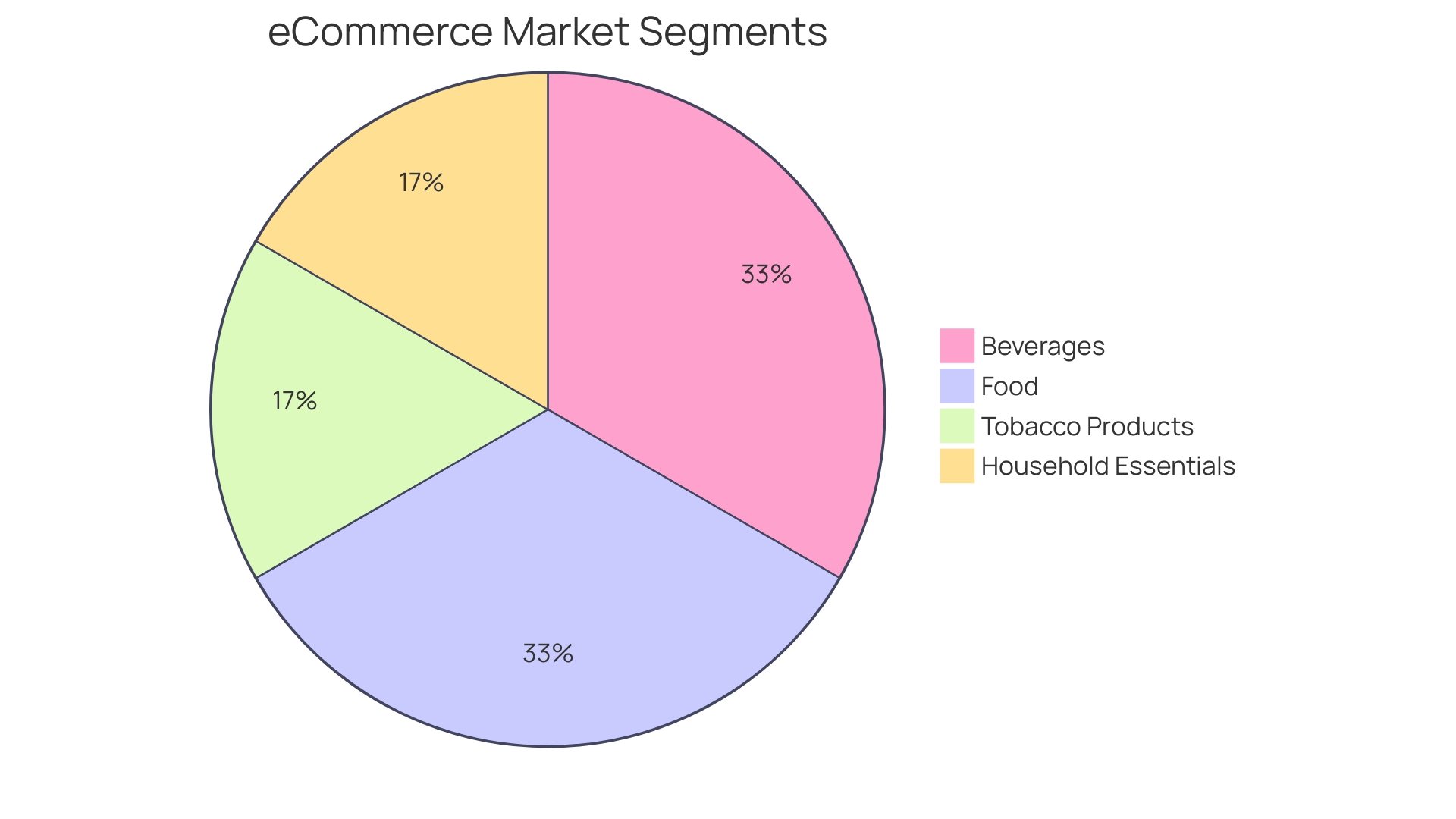
Types of Magento Mobile Apps: Native, Hybrid, and PWA
Choosing the right approach for developing a Magento mobile app requires weighing the options between native, hybrid, and progressive web apps (PWAs). Native applications provide unparalleled performance and experience by utilizing platform-specific programming languages such as Swift for iOS and Java for Android. Despite their advantages in accessing device features, the necessity of creating distinct versions for each platform can escalate time and costs.
On the other hand, hybrid apps utilize web technologies such as HTML, CSS, and JavaScript and are encapsulated within a native container. This strategy allows for a single codebase to function across multiple platforms, thereby streamlining development and reducing expenses. Nevertheless, the trade-off often comes in the form of diminished performance and less fluid integration with device capabilities compared to native apps.
Progressive Web Apps (PWAs) present a compelling alternative, offering a native-app-like experience, complete with push notifications and offline functionality, all while being built with common web technologies. PWAs circumvent the need for app store distribution, as they can be added directly to the user's home screen and accessed via a browser. However, PWAs may encounter limitations in device feature access relative to native applications.
As the online shopping environment advances, with an all-encompassing presence becoming essential, the choice regarding the kind of application to create should be in line with your brand's vision, strategies for engaging with customers, and technical needs. A systematic, collaborative approach that involves understanding business objectives, technical specifications, and customer preferences will guide the selection of the architecture and technologies that best fit your project's goals.
Step 1: Research and Planning
Beginning the development of an app for Magento can revolutionize your e-commerce business, as observed with industry leaders like Ripley. When creating your app strategy, start by clearly outlining your objectives. Whether it's to boost sales or enhance customer interaction, your goals will drive the app's development. Understanding your audience is crucial-they are the core of your experience. Analyze their habits and preferences to design an app that resonates with them, just as Ripley did to address its mobile conversion challenges.
Competitor analysis is not just about comparison, it's about finding your unique value proposition. Understand what others offer and identify opportunities to stand out. Feature selection shapes the individual experience; choose wisely to ensure each feature aligns with your objectives and meets individual needs, from browsing and search capabilities to secure payments.
The user journey should be seamless. Map the flow from sign-in to purchase, identifying any friction points that could deter your customers. Budgeting and timing are equally crucial. Determine a realistic budget that encompasses design, development, testing, and launch, considering the latest tech trends and market insights. Ripley's collaboration with Thoughtworks exemplifies an effective approach, emphasizing a user-centric design and a tech stack that evolves with the industry.
As apps continue to dominate our digital landscape, staying informed about the latest trends is vital. Reports forecast high-growth industries ready for disruption, with AI at the forefront. Keep these insights in mind as you develop your Magento app, ensuring your strategy is informed, innovative, and poised for success.
Step 2: Choosing the Right Magento Mobile App Builder
Selecting the perfect Magento app builder is crucial for the success of your application. Key factors to consider include:
-
Magento Compatibility: The app builder must be fully compatible with your Magento setup, supporting all the requisite features and extensions you intend to utilize. This compatibility is essential to leverage Magento's robust capabilities within your mobile app seamlessly.
-
Customization Flexibility: An app builder that offers extensive customization options is a must-have. This means being able to tailor the app's design, layout, colors, and branding to create a consistent and recognizable brand identity across platforms.
-
Ease of Use: A builder with a user-friendly interface simplifies the app creation process, making it accessible to those without deep technical expertise. The objective is to empower individuals to construct, personalize, and control their app with minimal hassle.
-
Integration Proficiency: Ensure that the builder offers smooth integration with your Magento store. This includes real-time syncing of products, inventory, and customer data to provide a seamless shopping experience.
-
Preview and Testing Tools: A feature that enables you to preview and test your app's functionality and experience before its official release is priceless. It helps in refining the user interface and ensuring the app meets your quality standards.
-
Support and Service: Strong support is an integral part of any service. The availability of a responsive support team ensures that any issues or queries you encounter will be promptly addressed, minimizing downtime and frustration.
In today's fast-paced market, where e-commerce giants like Amazon and Flipkart are setting high standards in customer experience, having a well-crafted app can significantly contribute to your competitive edge. By considering these factors and selecting a builder that aligns with your business objectives, you can position your app for success in the dynamic world of commerce.

Step 3: Designing Your Mobile App
High-quality design is a pivotal element in the creation of a Magento mobile app that stands out in the digital marketplace. Designing an interface that is easy to navigate is crucial; it should provide a streamlined, intuitive navigation system that enables individuals to easily browse products and finalize purchases. The app's design must embody the brand's identity through consistent use of colors, logos, and typography, mirroring the aesthetic established on the company's website.
Responsive design is non-negotiable in today's mobile-centric world. The app must smoothly adjust to different screen sizes and orientations, ensuring a seamless experience on all devices. This approach aligns with modern marketing insights, indicating a shift towards mobile-first strategies. The statistics underline the importance of mobile platforms, as the number of people with mobile plans has soared to approximately 5 billion globally.
The inclusion of high-resolution product images is another best practice that cannot be overlooked. Multiple visuals with zoom capabilities are not only favored but anticipated, enabling a closer examination of products. This attention to detail can significantly enhance the customer's shopping experience and align with the industry's shift away from minimalism towards more immersive and detailed design approaches.
Prominent call-to-action buttons play a crucial role in guiding individuals through the buying journey effortlessly. These buttons should stand out and encourage actions such as adding items to the cart, proceeding to checkout, and finalizing the purchase. An efficient checkout process is also key, with as few steps as possible and options for guest checkout and diverse payment methods. A recent analysis highlighted the necessity of offering a variety of payment options to maintain high conversion rates.
Lastly, the app's performance should be optimized to deliver fast loading times and fluid transitions. As data becomes increasingly central to business decision-making, tools like Mixpanel are being leveraged to enhance the user experience by measuring key performance indicators such as engagement and retention rates.
These best practices are influenced by a combination of design trends, consumer expectations, and the evolving landscape of e-commerce, ensuring that your Magento app will not only meet but exceed the modern shopper's needs.
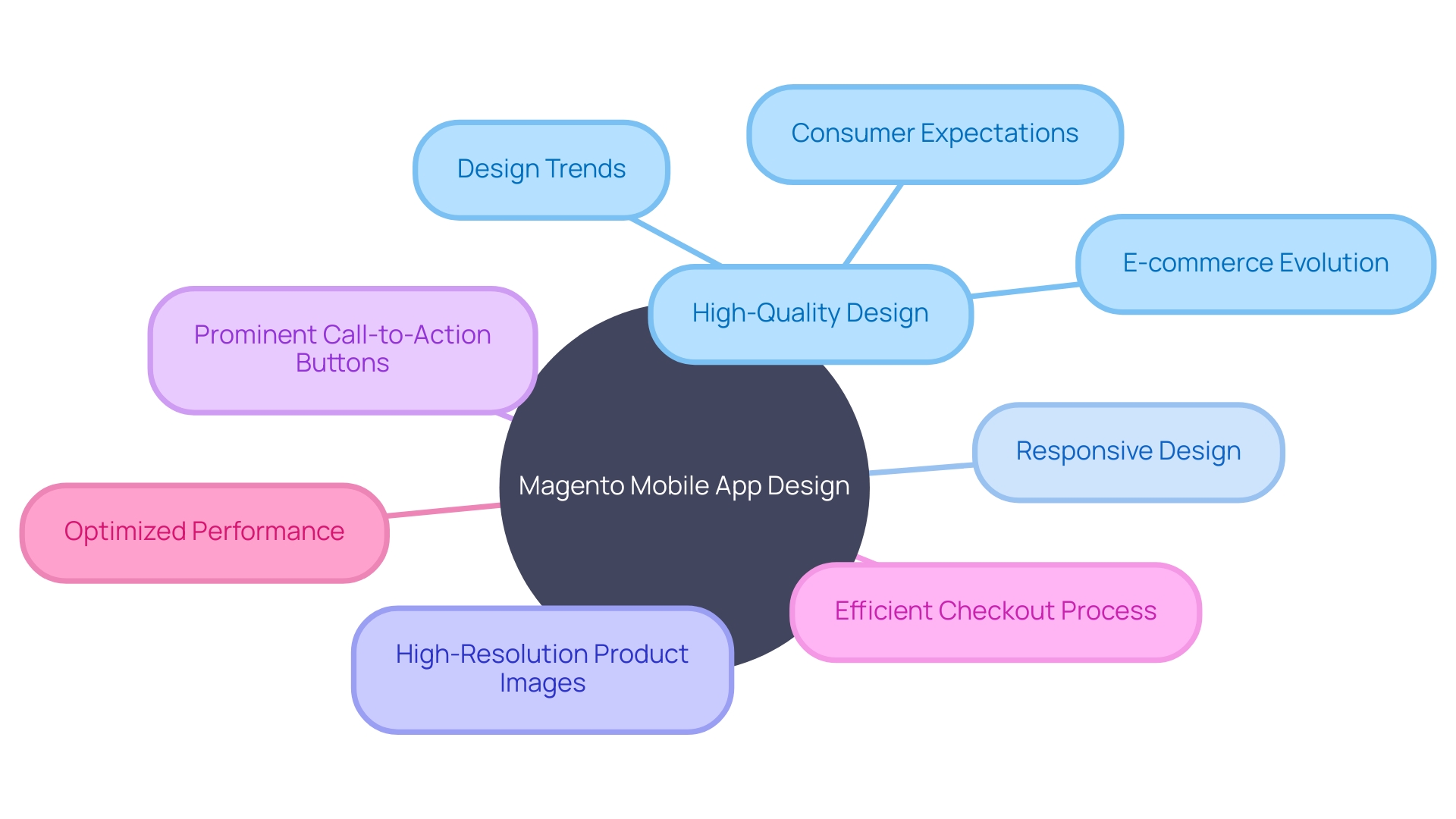
Step 4: Integrating Your App with Magento
The merging of applications with Magento platforms is transforming the e-commerce landscape, offering unparalleled convenience and efficiency. To achieve this, a series of strategic integration steps must be meticulously followed.
Beginning with API integration, this crucial process utilizes Magento's powerful API to connect your application to your Magento store, guaranteeing seamless data flow across products, inventory, user information, and orders.
Next, the execution of Single Sign-On (SSO) streamlines the user experience greatly by allowing individuals to access the mobile application with their Magento credentials, eliminating the need to handle multiple login details.
For payment processing, integrating a reliable payment gateway is imperative. It must not only promise secure transactions but also cater to the payment preferences of your client base, enhancing their shopping experience.
Lastly, order tracking and timely notifications are crucial for engagement. Real-time order tracking provides individuals with transparency over their purchases, while push notifications keep them informed about the status of their orders, fostering a sense of trust and loyalty.
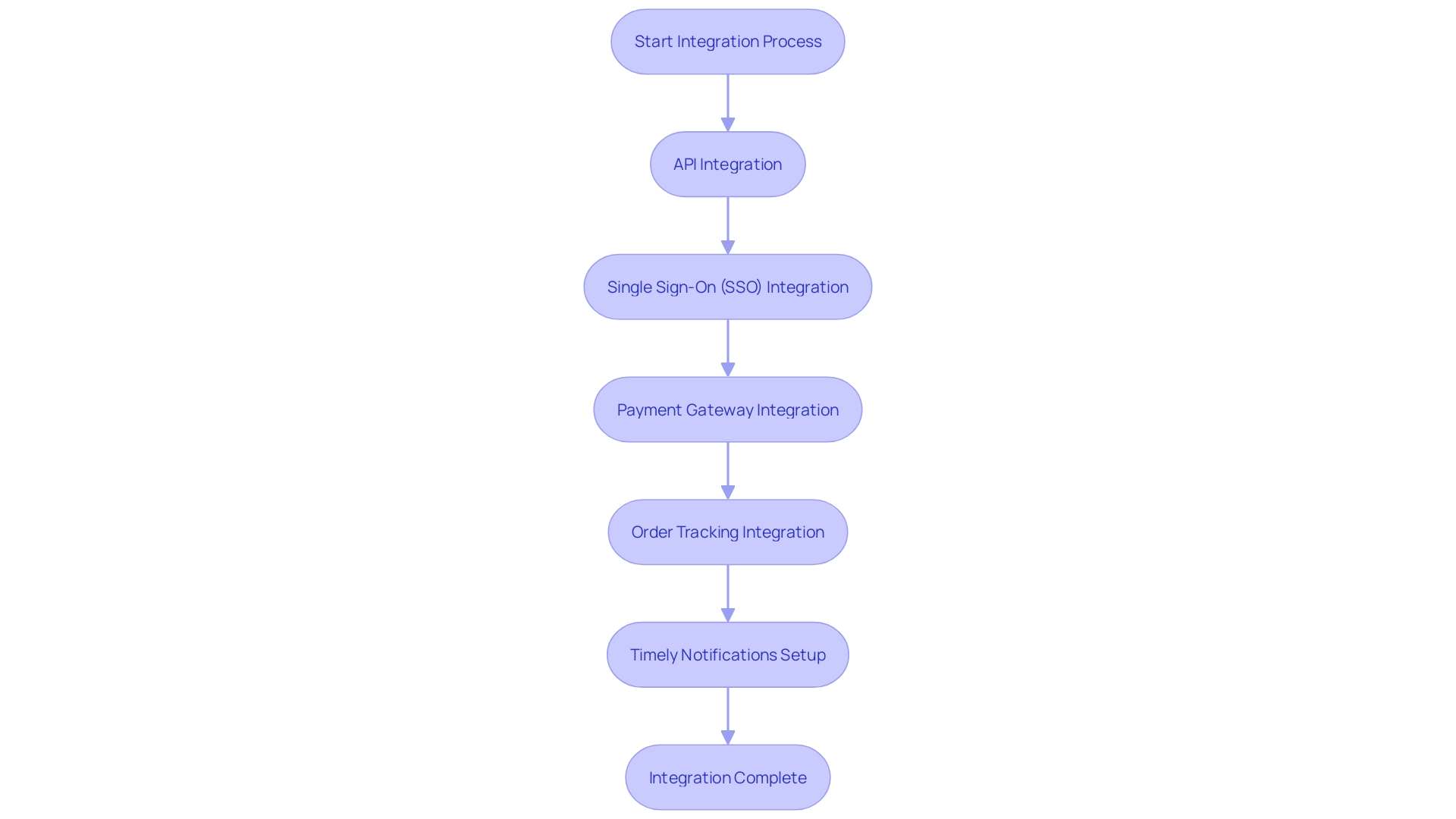
Step 5: Key Features to Include in Your Magento Mobile App
Improving your Magento app with functionalities that enhance experience can greatly boost engagement and satisfaction of customers. Here's how to enrich your Magento mobile app:
- Intuitive Product Discovery: Ensure that users can effortlessly browse through categories, utilize advanced filters, and leverage powerful search capabilities to locate their desired products promptly.
- Tailored Shopping Experience: By leveraging the capabilities of artificial intelligence, provide personalized product recommendations that adjust to individual preferences, past purchases, and browsing habits.
- Wishlist Creation: Empower users to bookmark their favorite items in a wishlist or favorites list, streamlining their shopping process and facilitating future purchases.
- Social Media Connectivity: Facilitate product sharing through social media platforms, thus extending your brand's reach and fostering community engagement.
- Trust-Building User Feedback: Implement a mechanism for individuals to provide product reviews and ratings, which can serve as valuable social proof and influence others in their purchasing choices.
- Streamlined Checkout: Create a checkout experience that is both smooth and secure, with a variety of payment methods to choose from, safeguarding customer information throughout the process.
- Order Management: Provide individuals with up-to-date order tracking, a complete overview of their order history, and timely notifications regarding the status of their deliveries. Utilize push notifications strategically to keep individuals informed about new arrivals, exclusive deals, and personalized offers, encouraging repeat visits and purchases.
- Direct In-App Support: Provide in-app messaging capabilities for users to contact support effortlessly, allowing them to receive prompt assistance and answers to their inquiries within the app itself.
Integrating these features into your Magento app for smartphones aligns with 2023's emphasis on data privacy, consumer-controlled experiences, and the requirement for unified digital commerce solutions. As brands navigate the post-cookie era, providing a coherent and consent-based personalized experience is more critical than ever, with 91% of surveyed adults in 2014 expressing concern over lost control of personal data. By implementing these features, you adhere to the evolving expectations of digitally-savvy individuals who value privacy, personalization, and seamless omnichannel interactions.
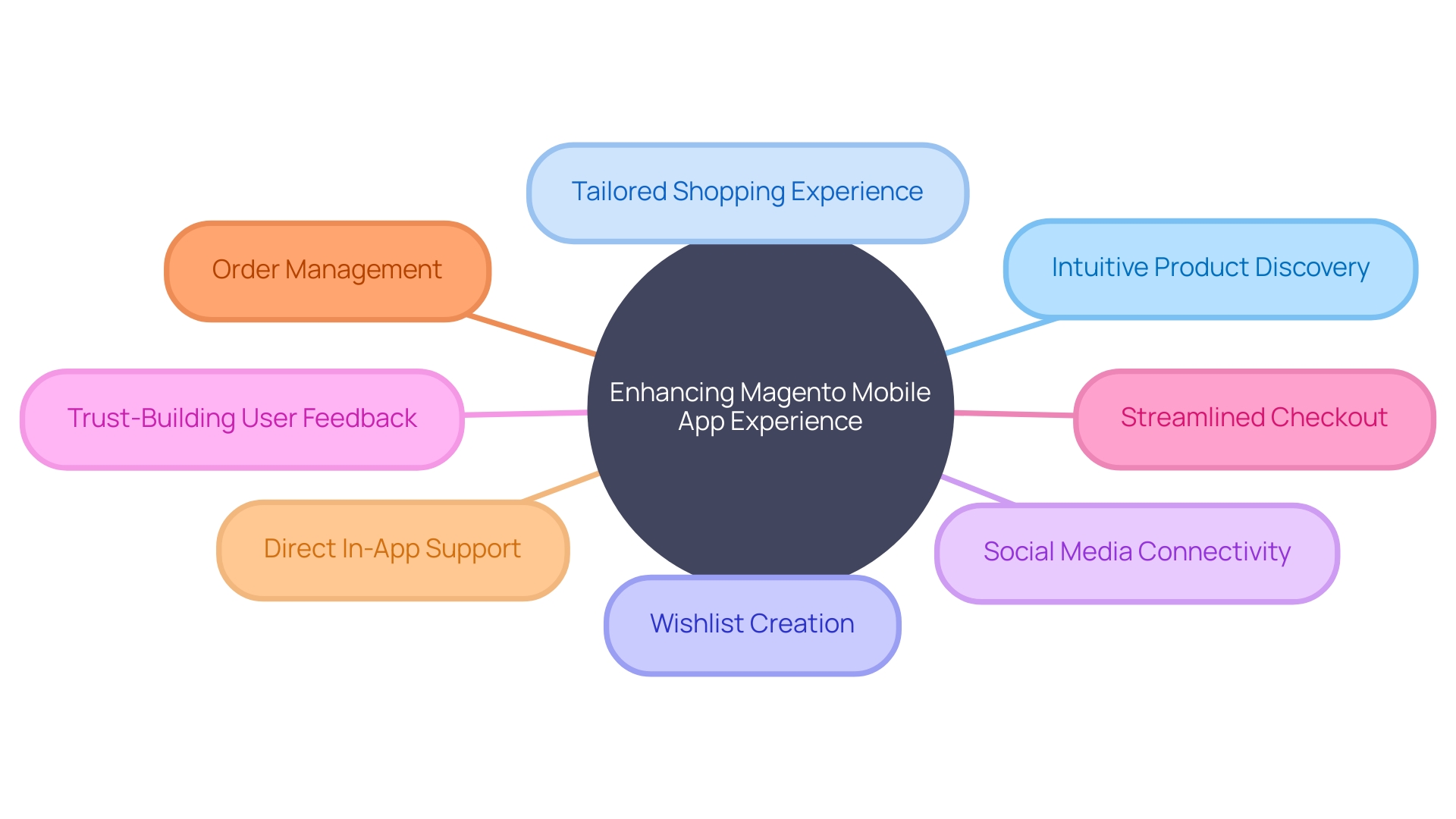
Step 6: Customizing and Branding Your App
Given the prevalence of portable devices in our everyday activities, a skillfully designed app is not only a continuation of your online store's existence, but also a crucial point of contact that has the power to greatly influence the overall user journey. Tailor your app to reflect your brand's unique essence, strengthening customer loyalty and improving brand recall.
Customizing your mobile app begins with the basics â an app logo and a splash screen that connect with your brand's visual identity, establishing the context for what individuals can anticipate. A well-designed icon and splash screen are more than just eye-catching; they're the digital handshake that greets individuals every time they engage with your app.
Selecting a color scheme that reflects your brand identity is equally important. Colors evoke emotions and associations, and the right palette can make your app not just visually appealing, but also intuitive for individuals. Consistency in your app's color scheme with your overall brand image reinforces brand recognition and provides a seamless experience across all customer touchpoints.
The choice of typography in your app should not be an afterthought. Fonts that align with your brand's personality and are readable contribute to an app's usability and aesthetic. A careful selection of typefaces can convey your brand's message with clarity and impact.
Custom iconography can transform navigation from a routine task to an enjoyable experience. Icons that are thoughtfully designed not only make your app's interface more intuitive but also infuse your brand's style into the smallest details of the app's design.
Branding elements such as taglines, slogans, and unique selling propositions can be strategically integrated within the app to reinforce brand identity. These elements remind users of the values and promises that your brand stands for, creating a deeper connection with your audience.
Finally, optimizing your app's presence on app stores is a critical step. App Store Optimization (ASO) involves using the right keywords, crafting compelling descriptions, and showcasing high-quality screenshots that highlight your app's features and design. According to a McKinsey report, personalization, which includes ASO, is essential for business growth, with 75% of business leaders acknowledging its importance for success.
By utilizing bespoke Magento development services and app solutions, you're not just building an app; you're creating an experience that connects with your customers, promoting loyalty, and driving engagement in an ever-growing mobile-focused market.
Step 7: Publishing Your App on App Stores
To access the continuously expanding market for portable devices, effectively launching your Magento app on app stores is crucial. Here's a refined approach for publishing your app:
-
Developer Accounts: Establish a presence on both iOS and Android platforms by creating an Apple Developer Account and a Google Play Developer Account respectively.
-
Compliance with Guidelines: Dive into the technical and design guidelines of the respective app stores. Ensure your app adheres to the detailed requirements to avoid any hiccups during the review process, including understanding trademark and copyright laws, as well as the specifics of the Program License Agreement.
-
Asset Preparation: Collate essential assets like screenshots, icons, and a compelling app description. These materials should be meticulously crafted to resonate with your target audience and to conform to app store standards.
-
Submission Process: Navigate the submission steps with precision, taking care to accurately categorize your app and optimize for discoverability through strategic keyword placement.
-
Review Phase: Anticipate a thorough examination by the app store's review team. Maintain readiness to swiftly address any feedback, recognizing that over 40% of review issues stem from guideline 2.1 on App Completeness.
-
Launch and Outreach: Upon approval, harness your website, social media, and email marketing to broadcast the launch. Promote downloads and request feedback to improve and enhance your app post-launch.
By adhering to these steps, your app not only gains visibility but also stands a better chance of thriving in the competitive digital marketplace.
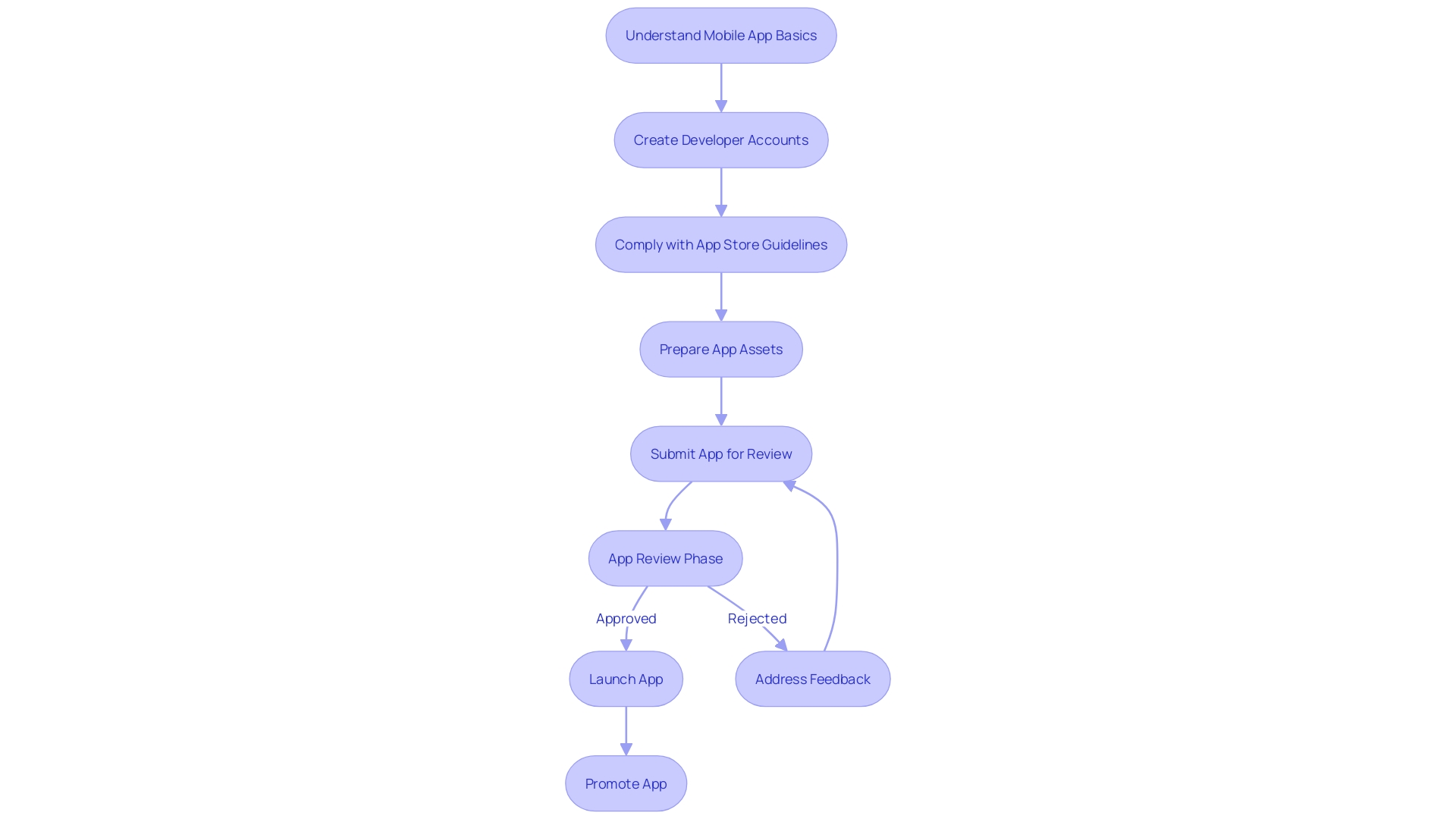
Step 8: Engaging with Your Audience and Providing Customer Support
To enhance the Magento mobile app experience, it is crucial to not only involve individuals but also to ensure they feel valued throughout their interaction with your brand. Here's a refined approach:
-
Personalized Communication: Leverage push notifications and in-app messages as conduits of personalized interaction. Customize these communications to mirror the individual's behavior and preferences, ensuring relevance and enhancing their shopping journey.
-
Rewarding Loyalty: Establish a loyalty program that acknowledges your app's regular patrons. This could include exclusive discounts, first dibs on sales, and special perks that incentivize repeat purchases and deepen customer loyalty.
-
Facilitate the seamless integration of social sharing capabilities, fostering an environment where individuals are encouraged to share their positive experiences. Proactive engagement on social platforms is crucial—acknowledge comments, address reviews, and interact with messages to foster a connected community.
-
Data-Driven Insights: Implement app analytics to monitor engagement and behavior. Utilizing data to inform decisions can lead to enhanced performance and an improved user experience.
-
'Accessible Support': Provide a variety of support channels such as in-app messaging, live chat, and email. Swift and efficient responses are crucial to resolving inquiries and upholding satisfaction.
-
Continual Improvement: Commit to regular app updates, focusing on new features, bug fixes, and performance enhancements. Promote individuals to upgrade their app to guarantee they take advantage of the newest offerings.
By prioritizing these strategies, you can forge stronger relationships with your app users, boost customer satisfaction, and ultimately, achieve higher conversion rates.
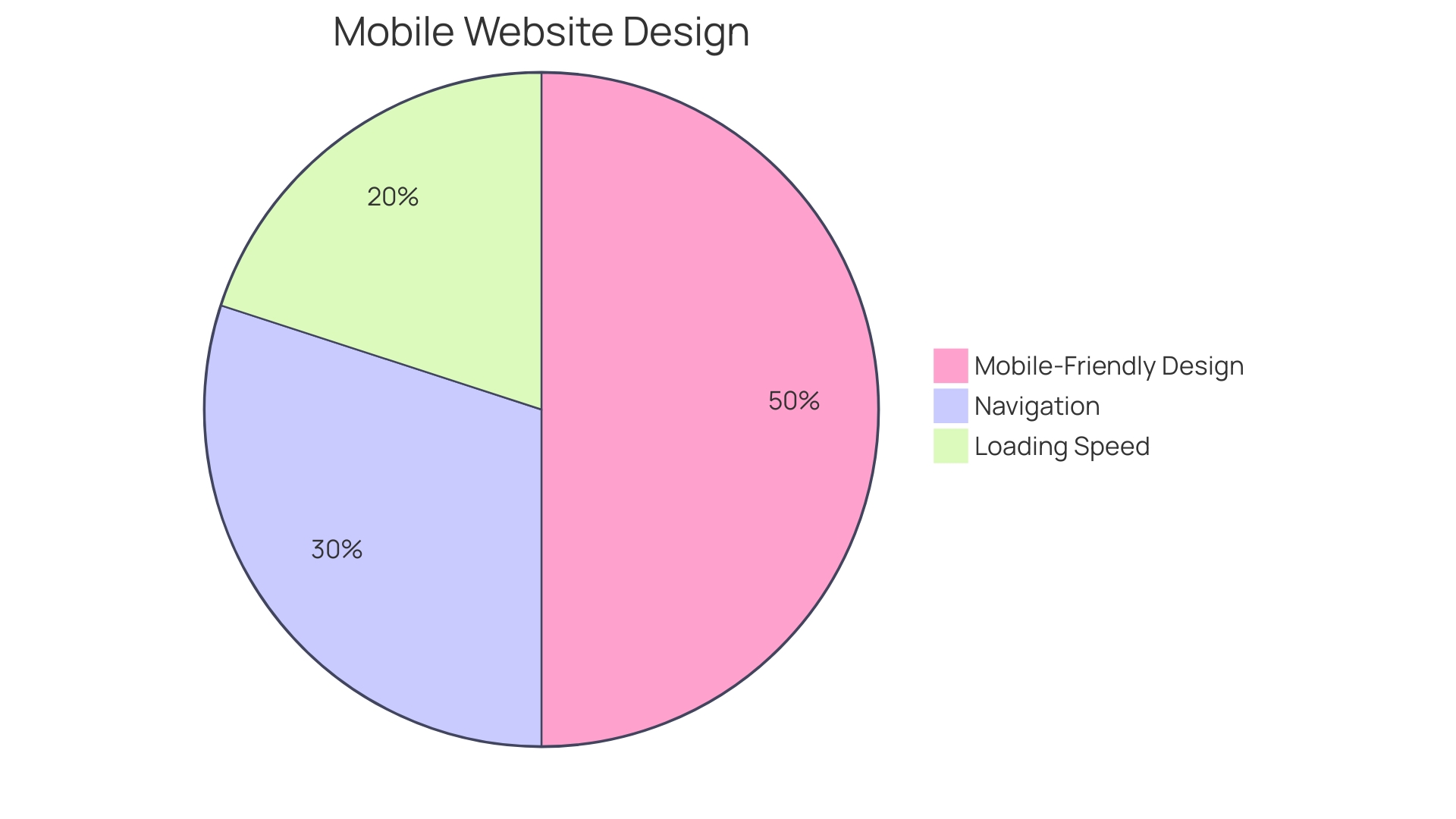
Benefits of Using a Magento Mobile App Builder
Adopting a strategy that prioritizes devices, businesses are increasingly relying on Magento app builders to utilize the benefits they provide. These builders facilitate the creation of apps that align seamlessly with Magento stores, offering real-time data synchronization which is crucial for the smooth management of products, inventory, and orders.
Without the need for extensive coding, app builders significantly reduce the time and cost typically associated with app development. Conventional development could take weeks or months, but with an app builder, a functional and sophisticated app can be ready in just a few hours. This expedited process allows businesses to quickly respond to market demands and remain competitive, especially during peak sales periods like Amazon's Great Indian Festival sale where quick product updates and stable app performance are critical.
Customization is another key benefit. The ability to tailor an app's design and features to suit a business's unique branding and functional requirements is invaluable. This flexibility ensures that the app resonates with the target audience, enhancing user engagement and potentially increasing client retention rates.
Most builders provide a user-friendly interface, enabling those without technical skills to build and manage their applications effectively. Additionally, ongoing maintenance and updates are often included, ensuring that the app remains up-to-date with the latest Magento and operating system versions.
Technical support services offered by app builders are a boon for businesses, as they help quickly resolve any issues, avoiding potential delays and debugging challenges. This support is particularly beneficial for small businesses embarking on their app development journey, as it helps them to navigate the process strategically and avoid common pitfalls.
In today's e-commerce landscape, where device usage and app engagement continue to rise, a Magento app builder is not just a convenience—it's a strategic tool that empowers businesses to capture more clients and offer enhanced services, all while ensuring a streamlined and intuitive shopping experience.
Common Challenges and Solutions in Magento Mobile App Development
Challenges in Magento mobile app development can range from performance issues to navigating app store approvals. To enhance app performance, it's crucial to streamline loading times and optimize code. Drawing inspiration from PWAs, developers can harness caching and image compression for a more responsive experience. Security is non-negotiable; encryption and SSL certificates, alongside PCI-DSS compliance, safeguard customer data and secure transactions.
Compatibility with Magento extensions is vital for seamless operation. Rigorous testing and collaboration with skilled developers can mitigate integration issues. Giving priority to the experience of individuals, developers must engage in continuous feedback loops and usability testing to refine navigation and design, ensuring the app is intuitive across various devices.
App store guidelines dictate the submission process. Understanding these nuances and addressing review feedback promptly can expedite approval, essential for capitalizing on peak sales periods like Amazon's Great Indian Festival or Flipkart's empowering e-commerce narratives.
In a market where e-commerce is booming and mobile usage is ever-increasing, these strategic approaches to Magento mobile app development can lead to a successful launch and sustained growth in user engagement.
Conclusion
In conclusion, Magento mobile apps offer numerous benefits for businesses in the e-commerce space. They enhance user experience, provide tailored shopping journeys, enable direct communication channels, offer offline functionality, and utilize device features. By leveraging these advantages, businesses can stay at the forefront of digital retail innovation and meet the evolving preferences of mobile-savvy consumers.
Choosing the right approach for Magento mobile app development is crucial. Native apps provide superior performance, hybrid apps offer a single codebase for multiple platforms, and progressive web apps (PWAs) offer a native-app-like experience without app store distribution.
Launching a successful Magento mobile app involves thorough research and planning, selecting the right app builder, designing a user-friendly interface, integrating with Magento, and incorporating key features such as intuitive product discovery and streamlined checkout.
Customizing and branding the app to align with the brand's identity is essential, as is publishing the app on app stores and engaging with the audience through personalized communication, loyalty rewards, and social media synergy.
Using a Magento mobile app builder offers benefits such as real-time data synchronization, reduced development time and cost, customization flexibility, user-friendly interfaces, ongoing maintenance and updates, and technical support services.
Despite challenges in app development, such as performance issues and app store approvals, businesses can overcome them by optimizing app performance, ensuring compatibility, refining user experience, and understanding app store guidelines.
By following these expert recommendations, businesses can create a seamless and personalized shopping experience through Magento mobile apps, positioning themselves as industry leaders in the digital retail space.





